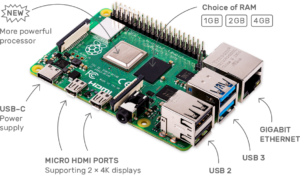Three New Media Strategies that I chose from my previous Journal, Journal 8, are upstage the man, DIY, and share what was inaccessible. In Journal 9, I will describe and defend why I chose these three strategies as well as how they relate to New Media.
To start, to “upstage the man” is to grab the media’s attention away from a legitimate power through humorous means. Immediately whenever I think of this, one of the first places I turn to is YouTube. This platform is full of media entertainers who pull pranks and other social experiments to gain publicity and create a following. One popular group is the Nelk Boys. Through a quick search, it can be hard to miss how much the Nelk Boys “upstage the man.” By going against the grain, they have gained publicity and fame over the internet. One example can be found at 4:26-7:19 in the embedded video. In this clip, we can see the person in the “Jordan” jersey starting to become a distraction. He is clearly starting to become a disruption to the class and starting to get more people’s attention. As the video progresses and he goes to the front of the room for a second time, he gets the attention of “the man” the one leading the lecture. This is when he takes full control and upstages the man by taking his power. The TA now has no control over the situation as the guy in the Jordan jersey continues to walk out after announcing he is dropping out of school and will not continue to take the exam. Although this example does not use new technology, as the test was being recorded by paper and pen, the Nelk Boys used a New Media Strategy by shifting people’s attention to themselves, instead of their exam.
Continuing, to create a DIY is to “do it yourself.” In a world full of overpriced items produced by companies looking to make a profit, it can be frustrating having to pay more for less. By doing it yourself, you are cutting down the price to a fraction of its cost as well as gaining more knowledge about the product. In this example, I chose a new media technology called an Arduino board. Although I am not an expert, from what I understand, an Arduino board is an open-sourced hardware that uses single-board microcontrollers used for building digital devices. It consists of both physical programmable circuit board and a piece of software that runs your computer used to write and upload computer code to the physical board (Sparkfun). An Arduino board can cost $15 for a beginner, entry-level board to $40 more advanced board. An example of using this technology to save a significant amount of money is by creating a robot arm with smartphone control. How To Mechatronics has found a way to create an Arduino Robot Arm that can be wirelessly controlled and programmed using a custom-built Android app (How To Mechatronics). In order to create this, the creators had to design and print 3D robot parts, connect the electronic components and program the Arduino, as well as develop an application to control the Robot. Although not all Arduino projects have to be this complicated, this is one example of how to make a cheap technology do great things. Opposed to buying a premade $4,000 robotic arm online, this is a nice cheap, and educational alternative to getting the same product.
Arduino boards have created a whole DIY creative community for people getting into coding and the fun aspects of technology. Its flexibility and affordable price gives its users the ability to design and create unique products from scratch that otherwise would not be accessible to the general public, making this a new media technology.

For my third New Media strategy, to share what is accessible, I chose to bring it back to the basics. With computers being so prevalent but expensive, and having access to the internet can be an extremely helpful tool, Raspberry Pi invented an alternative affordable computer system. “Our mission is to put the power of computing and digital making into the hands of people all over the world. We do this so that more people are able to harness the power of computing and digital technologies for work, to solve problems that matter to them, and to express themselves creatively” (Raspberry Pi). One product this company sells is Raspberry Pi 4, which is essentially a desktop computer for just $35. This product provides the barebones for what is needed to run a computer and provide internet access that fits all in the palm of your hand. Some of its other functions allow you to connect and display two 4k monitors simultaneously, run multiple tabs at the same time while browsing the web, Bluetooth connectivity, ethernet, and wireless networking, two USB type 2 and type 3 ports, and more. This technology allows cost-friendly computer access to countries around the world who might not have access otherwise. This is a New Media strategy because it allows many people to have access to the internet, not just those who can afford a new Apple MacBook.

Resources:
Nelk Boys – https://www.youtube.com/watch?v=7GzgwKwGhKQ
Sparkfun – https://learn.sparkfun.com/tutorials/what-is-an-arduino/all
How To Mechatronics – https://howtomechatronics.com/tutorials/arduino/diy-arduino-robot-arm-with-smartphone-control/
Raspberry Pi – https://www.raspberrypi.org

You must be logged in to post a comment.